 Image search results - "jodo" Image search results - "jodo" |

Established in 1617, Tsukiji Hongwanji temple is the Tokyo headquarters of the Nishi Hongwanji Jodo Shinshu sect. The present temple, based on Indian architecture, was built in the 1930s.The temple is the only one in Japan which is under the direct control of the sect. Its head priest is the Monshu Abbot himself. April 8 is observed as Buddha's birthday, called Hana Matsuri ("Flower Festival) in Japan.
|
|

Tsukiji Hongwanji temple gate with wisteria crest.The emblem is a wisteria flower and symbol of the Jodo Shinshu sect.
|
|

Temple gate and flag
|
|

Play room for kids on Hanamatsuri
|
|

Hanamatsuri altar
|
|

Pouring sweet tea over the BuddhaWhen the Buddha was born in Lumbini Garden in Nepal, sweet rain is said to have fallen. Thus, sweet tea is poured over the baby Buddha statue in the Hanamatsuri altar.
|
|

Hanamatsuri celebrates the Buddha's birthday on April 8. This is Tsukiji Honganji in Tokyo.The flowers symbolize Lumbini Garden where the Buddha was born in present-day Nepal.
|
|

Baby Buddha statueLadles are provided for pouring the sweet tea over the Buddha. Sweet tea is also provided to worshippers. It symbolizes the sweet rain that fell when the Buddha was born.
|
|

Children dressed for the chigo parade, Tsukiji Hongwanji, TokyoIt took a long time before they could get all the kids to settle down for the picture and to get all the mothers out of the picture.
|
|

Children dressed for the chigo parade (photo session), Tsukiji Hongwanji, Tokyo
|
|

Going to the chigo parade's starting point
|
|

White elephant to anchor the parade. Notice the Buddha altar riding on the top. Before she gave birth to the Buddha, Queen Maya dreamed of a white elephant.
|
|

Start of the Hanamatsuri parade which also promotes traffic safety.The starting point was a nearby park.
|
|

Parade starts...
|
|

Baton-twirling club from the Chiyoda Jogakuin Junior/Senior High School followed by the elephant千代田女学院
|
|

Chigo children
|
|

On the road in front of the temple
|
|

Baton-twirling club, Tsukiji Hongwanji, Tokyo 千代田女学院 バトン部千代田女学院
|
|

Female schoolmates of the baton twirlers block the cameras of unrelated photographers when the baton twirlers passed. カメラ小僧を妨害するバトン部の先輩たち。This was the first time for me in Japan to see people blocking photographers from taking pictures at a festival. They did it to me as well. If they don't want to be photographed, why do they appear in this public festival??
妨害しても無駄だと思いますが。撮られるのがいやでしたら、まつりに出ない方がいいですよ。
|
|

Band from the Chiyoda Jogakuin Girls Junior/Senior High SchoolNo problem photographing them.
|
|

Nagahama's most famous temple belongs to the Jodo Shinshu sect, Otani school. Omotesando path to Daitsuji.
|
|

The elephant follows the band.
|
|

Omotesando is lined with shops.
|
|

Entering the temple gate
|
|

Red paper umbrellas decorate the path.
|
|

Final performance
|
|
|

The parade was over after 30 min. (11:30 - 12 pm).
|
|
|
|

Chigo kids enter the temple
|
|

Sandal store
|
|

Hanamatsuri service inside the templeNotice the Hanamatsuri altar at the center.
|
|

Getting closer to the Sanmon Gate
|
|

Hanamatsuri service inside the Tsukiji Hongwanji temple
|
|

Omotesando as seen from Sanmon Gate.
|
|

Hanami-do housing a statue of the baby Buddha on which sweet tea is poured. When the Buddha was born in Lumbini Garden, flowers bloomed.
|
|

Daitsuji temple Sanmon Gate 山門
|
|

Praying to the Hanamatsuri altar
|
|

2006 NHK Taiga Drama "Komyo ga Tsuji" Exhibition banner and gate entrance.
|
|

Pipe organs
|
|

2006 NHK Taiga Drama "Komyo ga Tsuji" Exhibition mapThe temple was one of the venues for the special exhibition held for the NHK Taiga Drama "Komyo ga Tsuji" in 2006.
|
|

Outdoor food court
|
|

Daitsuji temple Hondo main hall and belfry
|
|

Statue of St. Shinran, founder of Jodo Shinshu sect.
|
|

Daitsuji temple Hondo main hall 大通寺本堂 MAP
|
|

Statue of St. Shinran (1173-1263), founder of the Jodo Shinshu (Pure Land) Buddhist Sect.
|
|

Daitsuji temple Hondo main hall 大通寺本堂
|
|

Cherry blossoms and the temple
|
|
|
|
|

Large Hall 大広間. This is also one location where the film Idai Naru, Shurararabon (偉大なる、しゅららぼん The Great Shu Ra Ra Boom) was filmed. The sleepover scene.
|
|
|

Large Hall 大広間
|
|

Playroom for kids
|
|

Komyo ga Tsuji exhibit showing Chiyo and Yamauchi Kazutoyo
|
|

Temple hall exterior
|
|

Entrance hall and palanquin 玄関
|
|

The white elephant
|
|

Corridor to main hall
|
|
|

Corridor to main hall
|
|

Taiko drum performance by Oedo Sukeroku Taiko troupe. 大江戸助六太鼓Their Web site: http://www.oedosukerokutaiko.com/
大江戸助六太鼓
|
|

Main hall roof
|
|

Oedo Sukeroku Taiko troupe大江戸助六太鼓
|
|

Corridor to main hall
|
|

Oedo Sukeroku Taiko troupe. They were all girls and super good!大江戸助六太鼓
|
|

Sanmon Gate as seen from the Hondo main hall
|
|

Oedo Sukeroku Taiko troupe大江戸助六太鼓
|
|

Sanmon Gate as seen from the Hondo main hall
|
|

Oedo Sukeroku Taiko troupe
|
|

Main hall
|
|

Beating backward: Oedo Sukeroku Taiko drummers大江戸助六太鼓
|
|

Hondo main hall altar 大通寺 本堂阿弥陀堂
|
|

Hanamatsuri in the old days (lot more children and people). 昔の築地本願寺の花まつり: 子供の数が大多かった。
|
|

Hondo main hall altar, Important Cultural Property 大通寺 本堂阿弥陀堂
|
|
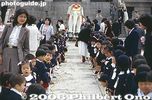
Many little kids held a long rope to pull the white elephant. 昔の築地本願寺の花まつり
|
|

Main hall veranda
|
|
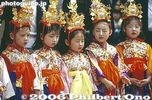
Chigo children. They have two black dots on the forehead and a white stripe on the nose. They don't paint the white stripe today. 昔の築地本願寺の花まつり: 鼻に白い線が塗っている。今は、塗らない。
|
|

Belfry
|
|

Chigo children. 昔の築地本願寺の花まつり
|
|
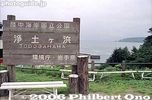
Jodogahama sign. Part of the Rikuchu-Kaigan National Park.Rikuchu-Kaigan National Park, Iwate Pref.
|
|

Belfry
|
|
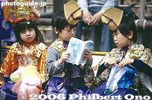
Chigo children. 昔の築地本願寺の花まつり
|
|
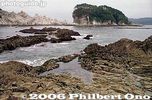
Jodogahama literally means Paradise Beach.Rikuchu-Kaigan National Park, Iwate Pref.
|
|

Belfry surrounded by a pond
|
|
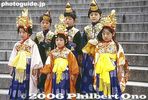
Chigo children. 昔の築地本願寺の花まつり
|
|
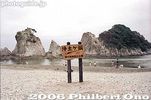
Dramatic rock formations.Rikuchu-Kaigan National Park, Iwate Pref.
|
|

Tree
|
|

昔の築地本願寺の花まつり
|
|
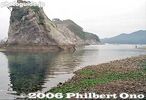
Jodogahama, Iwate Pref.Rikuchu-Kaigan National Park, Iwate Pref.
|
|

Straw blind
|
|
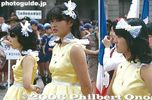
昔の築地本願寺の花まつり: 日大のバトン部か
|
|

Not a sandy beach, but still popular in summer.
|
|
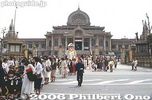
A very long hanamatsuri parade leaves the temple. 昔の築地本願寺の花まつり: 集合は別院内、これは出発。
|
|
|
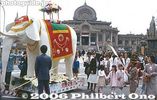
昔の築地本願寺の花まつり
|
|

Look at all those Cub Scouts. They don't participate today. 昔の築地本願寺の花まつり
|
|
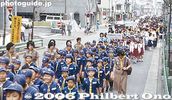
The chigo parade of bygone days was much longer with a lot more kids. 昔の築地本願寺の花まつり: かなり長い行列でした。
|
|

Buddhist flag. 昔の築地本願寺の花まつり
|
|

Nihon University college band was part of the parade. 昔の築地本願寺の花まつり
|
|

昔の築地本願寺の花まつり
|
|
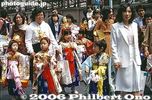
昔の築地本願寺の花まつり
|
|

On the left of the road is the path to Rengeji temple.
|
|

Path to Rengeji temple.
|
|

Smack dab in front of Rengeji temple is this monstrosity that is the Meishin Expressway.
|
|

Right after passing under the Meishin Expressway, you see Rengeji's Sanmon Gate. 蓮華寺 山門
|
|

Rengeji is famous as the place where Hojo Nakatoki 北条仲時 and over 430 of his men committed suicide after being defeated by Ashikaga Takauji's forces during the fall of the Kamakura shogunate in 1333. This is a monument for this tragic event.
|
|

On the left of the Sanmon Gate is the "River of Blood." When Hojo Nakatoki and 430 of his men slit themselves on May 9, 1333, the blood became a river flowing here. It was during the Genko War when the Emperor Go-Daigo fought the Kamakura shogun
|
|

"River of Blood" sign. In charge of national security, Hojo Nakatoki was the last Rokuhara Tandai Kitakata chief from the Hojo clan in the Kamakura shogunate. When tourists see this sign, they become scared to enter the temple.
|
|

Rest assured, it's very peaceful in the temple. Rengeji's Sanmon Gate (right) and bell tower on left.
|
|

Wooden insignia on Sanmon Gate with the Imperial crest on the left. The temple was originally founded by Prince Shotoku Taishi about 1,300 years ago. He named it Horyuji 法隆寺. After being struck by lightning, it was rebuilt in 1284.
|
|

Rengeji temple belongs to the Jodo-shu Buddhist sect. The founding priest was Saint Ikko. With support from the lord of Kamaha Castle near Bamba, he was able to rebuild the temple and renamed it Rengeji. 一向上人
|
|

Rengeji Hondo Hall, Banba-juku, Maibara, Shiga. Quite a few emperors favored this temple. The 95th Emperor Hanazono (1297-1348) gave the temple an Imperial sanction to receive Imperial prayers. Hence, the temple's Imperial crest. 蓮華寺
|
|

Until 1943, the temple was a dojo for the Jishu Ikko sect. It then converted to Jodo-shu. Admission is charged, I think 300 yen. There's a unmanned collection box near the entrance.
|
|

Red plum blossoms in front of Rengeji Hondo Hall, in early April.
|
|

Inside Rengeji Hondo Hall, left altar.
|
|

Inside Rengeji Hondo Hall, main altar at the center. There are two figures: Amida Nyorai and Shaka Nyorai. Jodo-shu Buddhist sect. 蓮華寺 本堂
|
|

Inside Rengeji Hondo Hall, main altar at the center. 蓮華寺 本堂
|
|

Inside Rengeji Hondo Hall, right altar.
|
|

Rengeji Hondo Hall's framed nameplate. The temple's name was written by Emperor Go-Mizunoo (1596–1680).
|
|

This is the area where Hojo Nakatoki and his men committed seppuku.
|
|
|

Bell tower. Cast during the time of Saint Ikko, the bell is an Important Cultural Property.
|
|

Inside is a Jizo-son statue worshipped for transportation safety.
|
|
|
|

Memorial for victims of the Pacific War.
|
|

Monument for a poem by Saito Mokichi (1882-1953). 斉藤茂吉の歌碑 「松風の音を聞くときは 古への 聖の如く 我は寂しむ」
|
|

Grave of the lord of Kamaha Castle who helped to rebuild the Rengeji temple.
|
|

Way to the graves of Hojo Nakatoki and his men who committed suicide.
|
|

A few steps up a slope.
|
|

Memorial for Hojo Nakatoki and his men. They had lost to Ashikaga Takauji in the battle at Kyoto and were trying to escape to Kamakura, but was caught by Takauji's forces at Bamba.
|
|

Over 430 gravestones. Hojo Nakatoki and his men were besieged in Bamba by Southern Imperial Court forces. They fought back, but lost and slit their bellies in front of Rengeji's Hondo main hall.
|
|

The temple's third priest wrote the names and age (youngest was 14) of the known fallen warriors in a scroll. He also made these gravestones for them. Visuallly, it's very impressive edifice.
|
|

Graves of Hojo Nakatoki and his men from the Rokuhara Tandai. 北条仲時一行の墓
|
|

The gravestones have five levels. In fall, the surrounding maple leaves turn blood red.
|
|

There are more steps which lead to graves of temple priests and Saint Ikko's mausoleum.
|
|

Graves of previous temple priests.
|
|

Mausoleum of Saint Ikko Shunsho.
|
|

Small mausoleum for Saint Ikko. 一向上人の御廟
|
|

Side of the Hondo
|
|

Behind the Hondo hall is a small hill with the Bamba Chutaro Jizo-son statue.
|
|
|

Bamba Chutaro Jizo-son statue, based on a character in the novel "Mabuta-no-Haha" 瞼の母 by Hasegawa Shin (1884-1963) 長谷川伸. 番場忠太郎
|
|

View behind the Hondo.
|
|

Also behind the Hondo is this Ikko-sugi tree, 700 years old. Named after the temple's founding priest Saint Ikko, it was planted where Ikko was cremated. Over 30 meters high and 5 meters wide. 一向杉
|
|

Temple garden. Best during spring when the flowers bloom.
|
|

View from Hondo hall.
|
|

Eikando is a Jodo-shu Buddhist temple famous for autumn foliage, especially red maples. One of Kyoto's most photogenic spots for fall leaves.
|
|
|
|

When you first enter Eikando temple in Kyoto, this is what you see. A hint of more to come.
|
|
|

This path of maples would be redder a several days earlier. Path to Miei-do Hall.
|
|
|
|
|
|

Everywhere you look in Eikando is so utterly photogenic, or should I say paint-genic since they didn’t have cameras when the temple was built. Everywhere looks like a scene from a classic Japanese painting.
|
|
|
|

Even the shape and placement of the trees are so artistic.
|
|

Eikando temple, Kyoto
|
|

Whoever landscaped or designed the temple grounds was an artistic genius.
|
|
|
|
|
|
|
|
|
|
|

Main entrance to the temple.
|
|

Courtyard garden
|
|

Courtyard garden seen from the Shaka-do Hall.
|
|
|

Courtyard garden seen from the Shaka-do Hall.
|
|
|
|
|
|
|
|
|

Roof of the Mieei-do Hall.We were not allowed to photograph inside the temple buildings.
|
|
|

Amida-do Hall
|
|

Amida-do Hall
|
|

Temple bell
|
|
|
|
|
|
|

Yasuragi Kannon at Eikando
|
|
|

Yasuragi Kannon statue at the bottom of the steps of Amida-do Hall.
|
|
|
|

Miei-do Hall (Daiden)
|
|

Miei-do Hall (Daiden)
|
|
|

Hojo-ike Pond. Notice the two-story pagoda (Tahoto) in the distance.
|
|

Hojo-ike Pond. The two-story pagoda (Tahoto) in the distance.
|
|

The two-story pagoda (Tahoto) is a short climb up the stairs. Worth the view.
|
|

View from the two-story pagoda on the hillside. This would be a sea of red during the peak period. I have to come back here.
|
|

View from the two-story Tahoto pagoda on the hillside at Eikando.
|
|
|

Bridge to Benten-shima on Hojo-ike Pond.
|
|

Bridge to Benten-shima on Hojo-ike Pond.
|
|

Miei-do Hall in the distance.
|
|
|

Gasen-do Hall
|
|
|

Gasen-do Hall
|
|

Eikando
|
|

Bridge to Benten-shima on Hojo-ike Pond.
|
|

Bridge to Benten-shima on Hojo-ike Pond.
|
|
|

Eikando
|
|
|
|

JPN Cafe
|
|
|

They also had a rest area where they served tea and sweets amid the foliage. Brisk business.
|
|
|
|
|
|

Eikando
|
|
|
|
|
|

Eikando
|
|
|
|

Eikando, Kyoto
|
|

I was a few days too late to see the peak. Will return again in autumn.
|
|
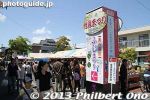
Path leading to the entrance of Takehana Betsuin temple.
|
|
|
|
|
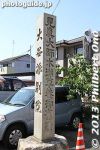
Takehana Betsuin temple belongs to the Jodo Shinshu Sect's Otani School (Higashi Hongwanji).
|
|
|
|
|
|
|
|
|
|
|
|
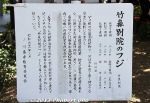
Takehana Betsuin temple's wisteria is over 300 years old.
|
|
|
|
|
|
|
|
|
|
|
|
|
|
|
|
|
|
|